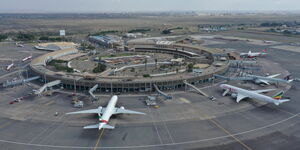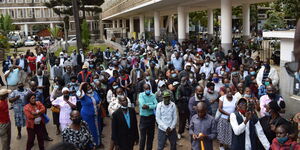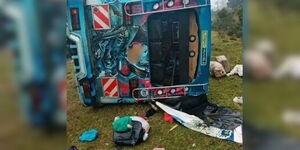A new system is set to be implemented in Nairobi city which could see a reduction in the traffic snarl-up residents have become synonymous with.
The system will see the city construct new lanes specially reserved for high capacity buses.
According to Nairobi Metropolitan Area Transport Authority CEO James Ng'ang'a, the system, which was borrowed from Colombia’s bus rapid transit model, will be better than that in Tanzania.
“We are working with the Bogota model which is advanced and better timed than Dar es Salaam is,” pointed out.
[caption caption="NAMATA CEO James Nganga at a past conference"] [/caption]
[/caption]
The focal aim of the bus rapid system is replacing the conventional bus system with an advanced public transport network.
In the TransMilenio system that has been executed in Bogota, Colombia, bus station access is regulated via cards which commuters swipe to enter the station and await their respective buses. The station thus operates like an above-the-ground subway.
A similar system is in operation in Dar es Salaam but cash is used as a substitute for cards.
For Nairobi, overhead pedestrian passageways will be constructed after every kilometer through which pedestrians will get into their bus pick-up points.
All passengers in the new system will use cards to access their buses and each bus will have a capacity of 160 passengers.
[caption caption="A Bus in Bogotoa under the TransMilenio System"] [/caption]
[/caption]
The Nairobi Metropolitan Authority will be constructing the lanes on five routes around Nairobi that it has already mapped out.
Within the CBD, bus rapid lanes will be built along Haile Sellasie, Moi Avenue, Kenyatta Avenue and University Way.
The system will be constructed on four other routes outside the city including Thika Superhighway, Jogoo Road, Mombasa Road and Outer Ring Road.












